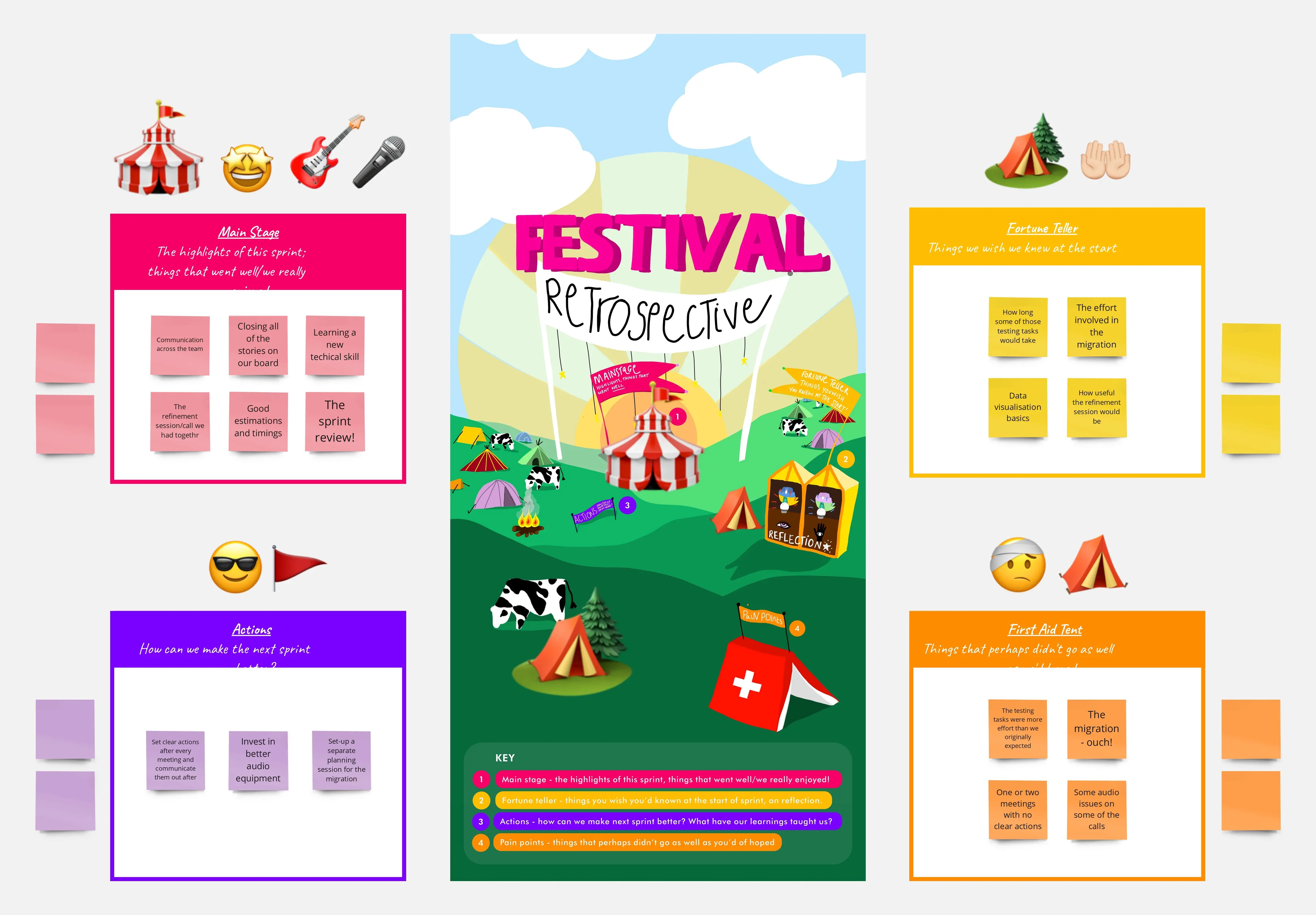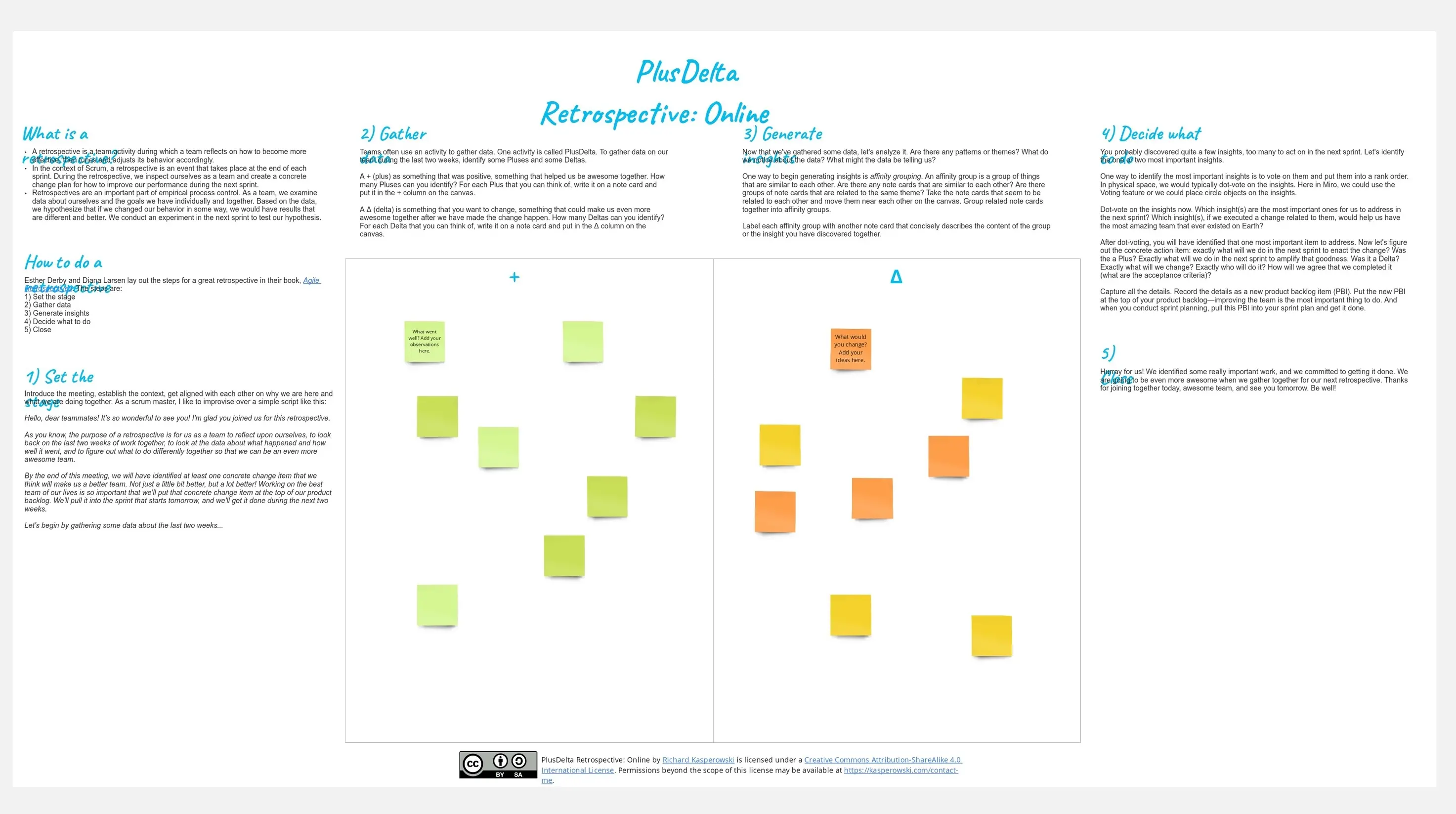Based on the classic console game Mario Kart, the Mario Kart Sprint Retrospective is a fun and thought provoking format for your teams next retrospective.
When to use the Mario Kart Sprint Retrospective
Sprint Retrospectives can soon become stale if the same format is used every time. By asking the team a different set of questions to normal, in a fun and engaging way it is more likely that the team will open up to the session and engage with one another in a more meaningful way. In this format, the team is represented by the Kart and by reflecting on their last sprint needs to come up with actions that will help them be more successful. As an icebreaker you could get everyone to share who their favourite Mario Kart character is.
How to use the Mario Kart Sprint Retrospective
On the last day of your sprint, set aside between 1 and 2 hours for this session depending on the size and maturity of your team. The format works by asking team members a set of questions. When you explain the questions to the team, encourage them to think beyond the questions on the board and what might be happening in the game – only now, the Kart is the team
What slowed the team down? Did anyone or anything throw bananas at them? Did they slip on oil or holes in the track or where they successfully avoided? Who threw the bananas at them?
What powered the team up? Where did they find the powerups? Were they in a risky shortcut or maybe they were stolen from another team?
What are the team worried about? Are other teams going to overtake or push them off track? Is something coming from behind to knock them off course?
I wish I had? What would be useful to help the team? Maybe a map on the screen? Better track knowledge? A faster Kart?
Each member of the team should provide their own answers to the questions and share them back with the team. If team members have duplicates, that’s fine - start to create a cluster of similar ideas. Doing this will help show that an idea is on several peoples minds.
When everyone has shared all of their ideas, check that everyone understands them and then get the team to group similar items and threads together. Run a voting session to determine which are the groups priority items. Working through them in priority order ask the team what steps need to be taken in the next sprint to address these ideas.
Maybe they found a powerup unexpectedly that fixed some brittle tests and they can share that knowledge with other teams?
Maybe they slipped on another teams banana by finding problems at the late integration stage which can be fixed by integrating earlier when they do a similar piece of work in the next sprint?
Categories
Similar templates
Festival Retrospective

Festival Retrospective
The Festival Retrospective template offers a unique and engaging approach to retrospectives by framing the session as a festive event. It provides elements for reflecting on past experiences, celebrating achievements, and setting goals for the future. This template enables teams to foster a positive and celebratory atmosphere, encouraging open communication and collaboration. By promoting a festive spirit, the Festival Retrospective empowers teams to strengthen bonds, boost morale, and drive continuous improvement effectively.
Perfection Game Retrospective: Online
PlusDelta Retrospective: Online
Festival Retrospective

Festival Retrospective
The Festival Retrospective template offers a unique and engaging approach to retrospectives by framing the session as a festive event. It provides elements for reflecting on past experiences, celebrating achievements, and setting goals for the future. This template enables teams to foster a positive and celebratory atmosphere, encouraging open communication and collaboration. By promoting a festive spirit, the Festival Retrospective empowers teams to strengthen bonds, boost morale, and drive continuous improvement effectively.


